Submitted by WA Contents
Mecanoo transforms a site of University of Cambridge into worker housing with textured facade
United Kingdom Architecture News - Apr 30, 2020 - 13:20 9019 views
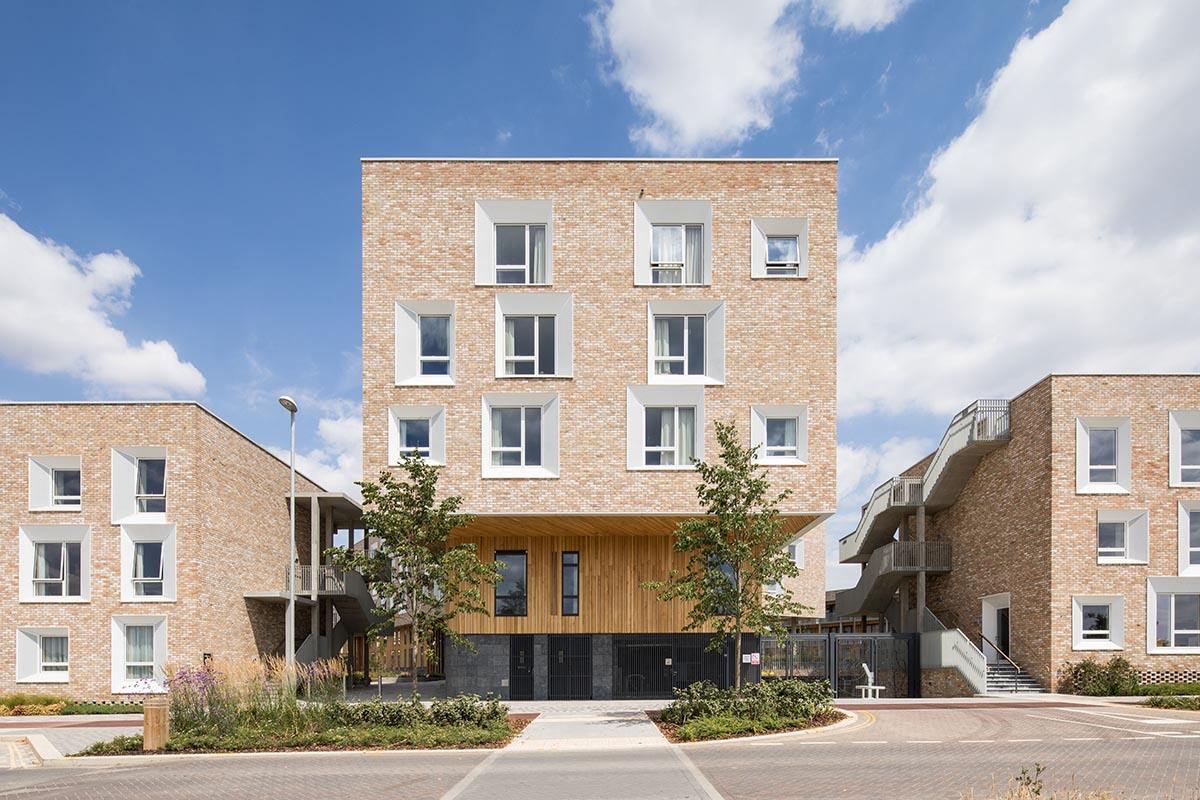
Mecanoo has transformed a 150-hectare site of University of Cambridge farmland into a community complex, including residential buildings, academic facilities, public amenities and open green space.
Mecanoo worked alongside NWCD to deliver 232 affordable housing units for researchers and key university employees. In response to the client's project brief, "creating a community" was a vital part of the brief, so the firm brought a new interpretation of the public and private realm in this project.
Named Key Worker Housing University of Cambridge, the project features different tones of powder-colored materials marked with white openings with angular introverted surfaces.

New layer
"Cambridge is a city contextualised through the layering of architectural inventions over the centuries. This has resulted in a unique composition of urban space, architecture and landscape," said Mecanoo.
Mecanoo’s design adds a new layer to this, building upon the rich traditions and collegiate character of Cambridge.

Public - private
To create a strong sense of community the relation between the public and private realm has been carefully reconsidered. The characteristic Cambridge variation of enclosed and open spaces, alternating between formal and informal groupings of buildings, is a departure point for the design that activates the courtyards and creates different connections between the dwellings and the communal area.
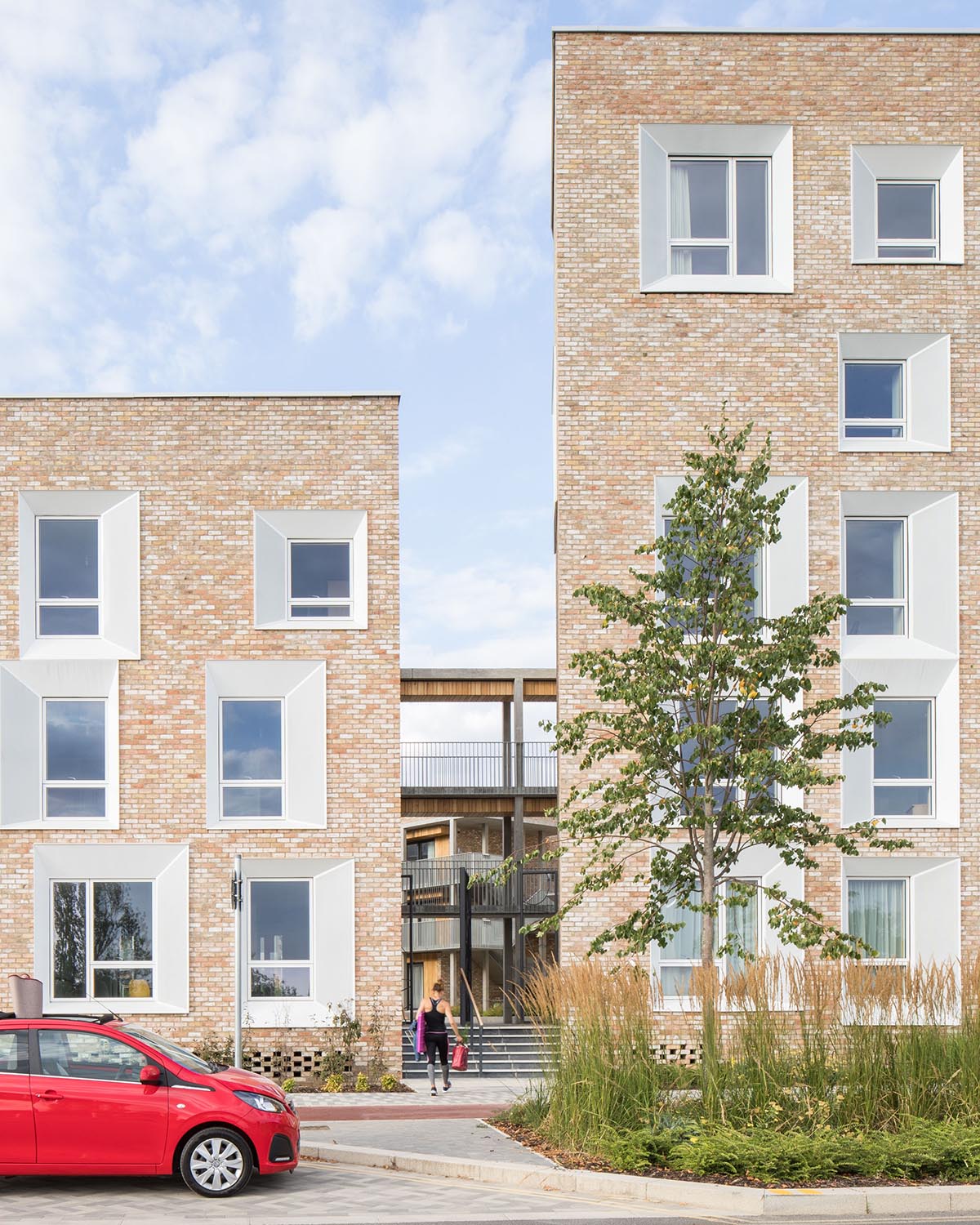
Courtyards
The two internal courtyards with lawn, flower fields, raised decks, planters, fruit trees and urban furniture are sheltered by galleries forming covered outside community spaces. Apartments are grouped around spacious central halls flooded with daylight, all leading to the courtyards.
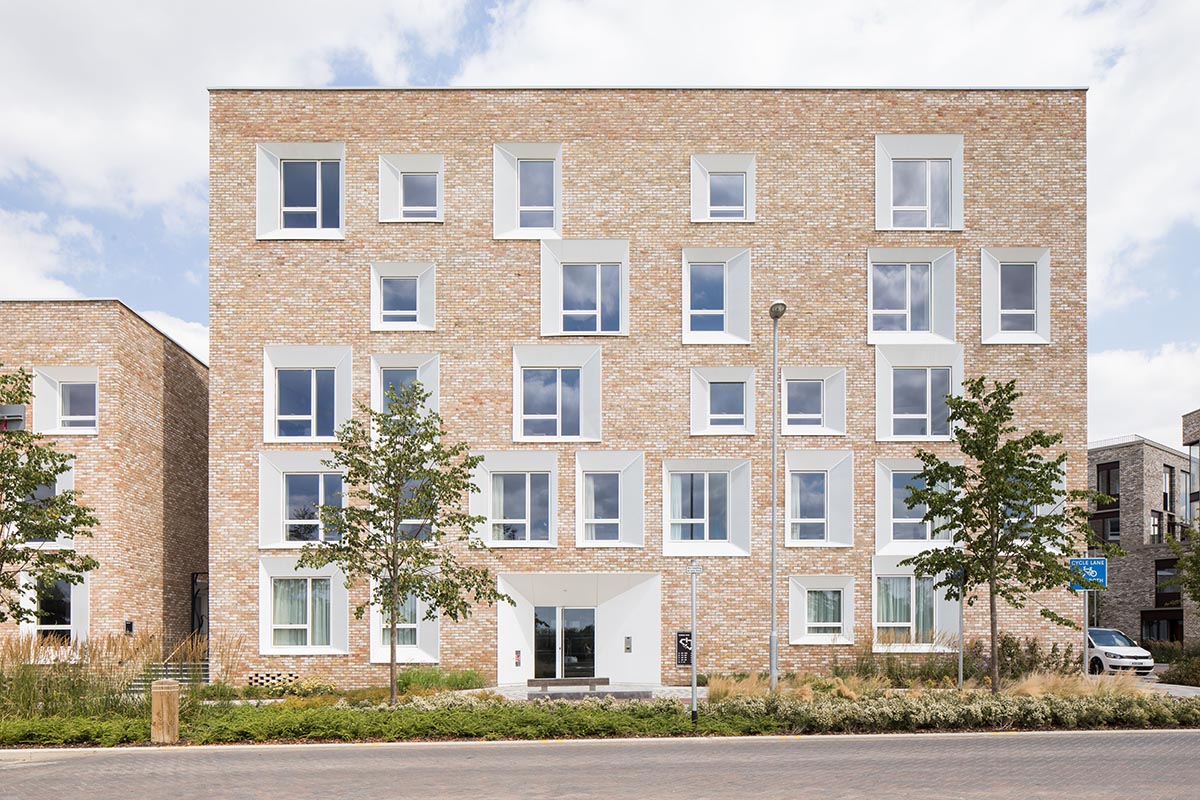
Communal identity
The central building is the visual and communal focal point of the development and acts as a spine to the site. Covered exterior space in the heart of the development forms a modern interpretation of the Cambridge colonnades and arcades.
Locating the community facilities along the public route through the block facilitates the development of a communal identity, whilst reaffirming that sense of being part of a much larger academic collective.
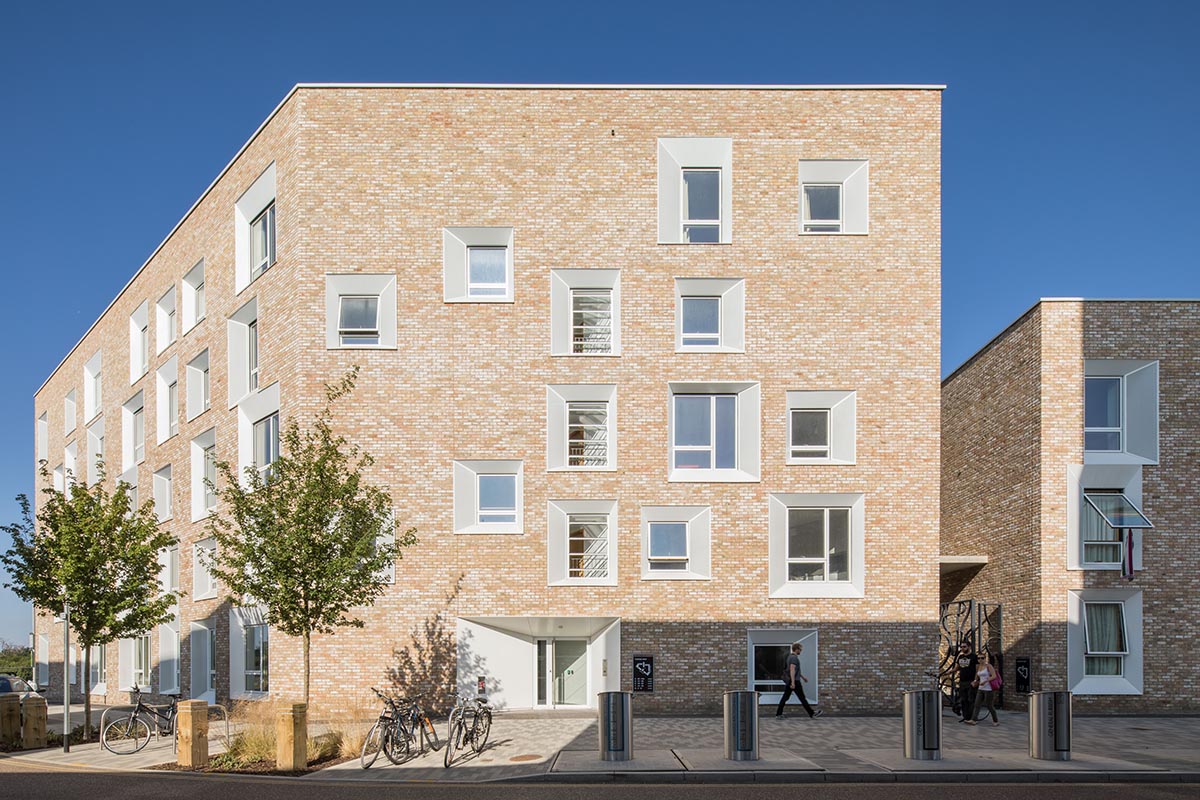
Sustainability
The design complies with Code For sustainable Homes Level 5. This was achieved by creating compact, efficient volumes with high performance Fabric Energy Efficiency, good internal daylight performance, bespoke assisted natural ventilation for night-time cooling, large array of PV cells on the roofs, district heating, a site wide rainwater attenuation strategy including a grey water system and collective gardens that increase the biodiversity.
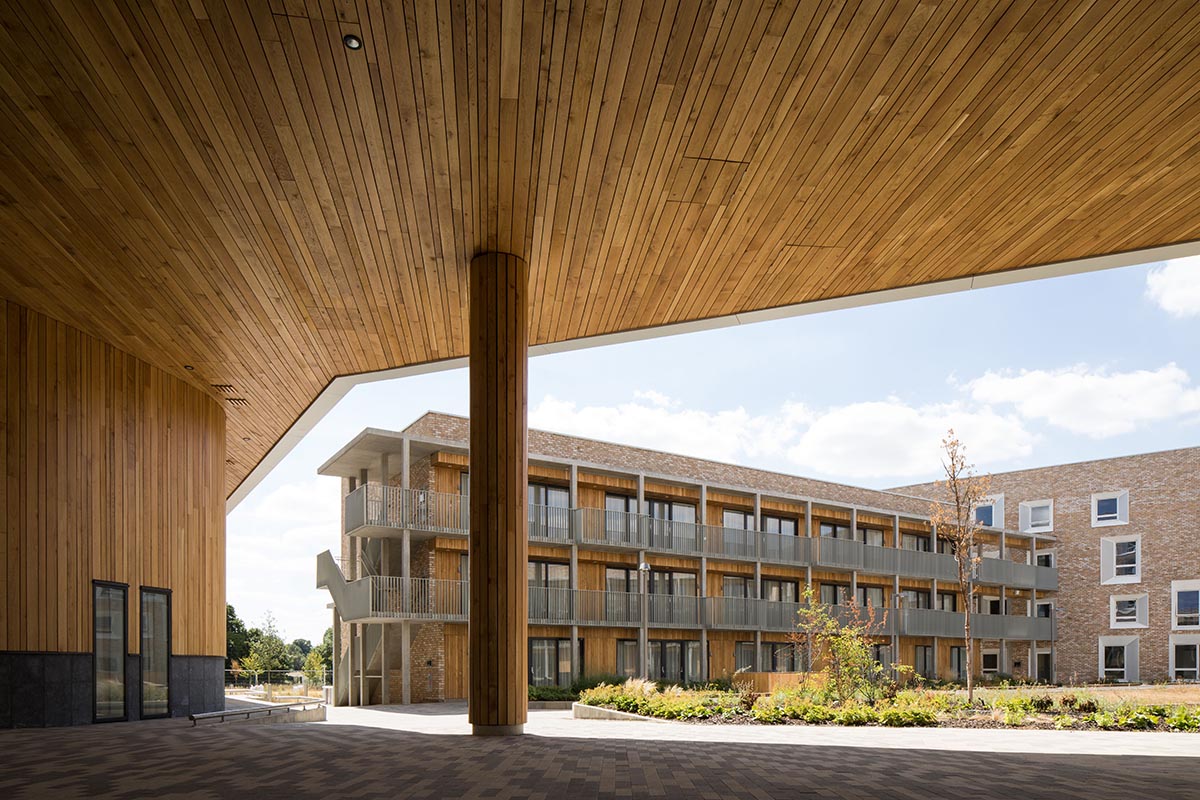
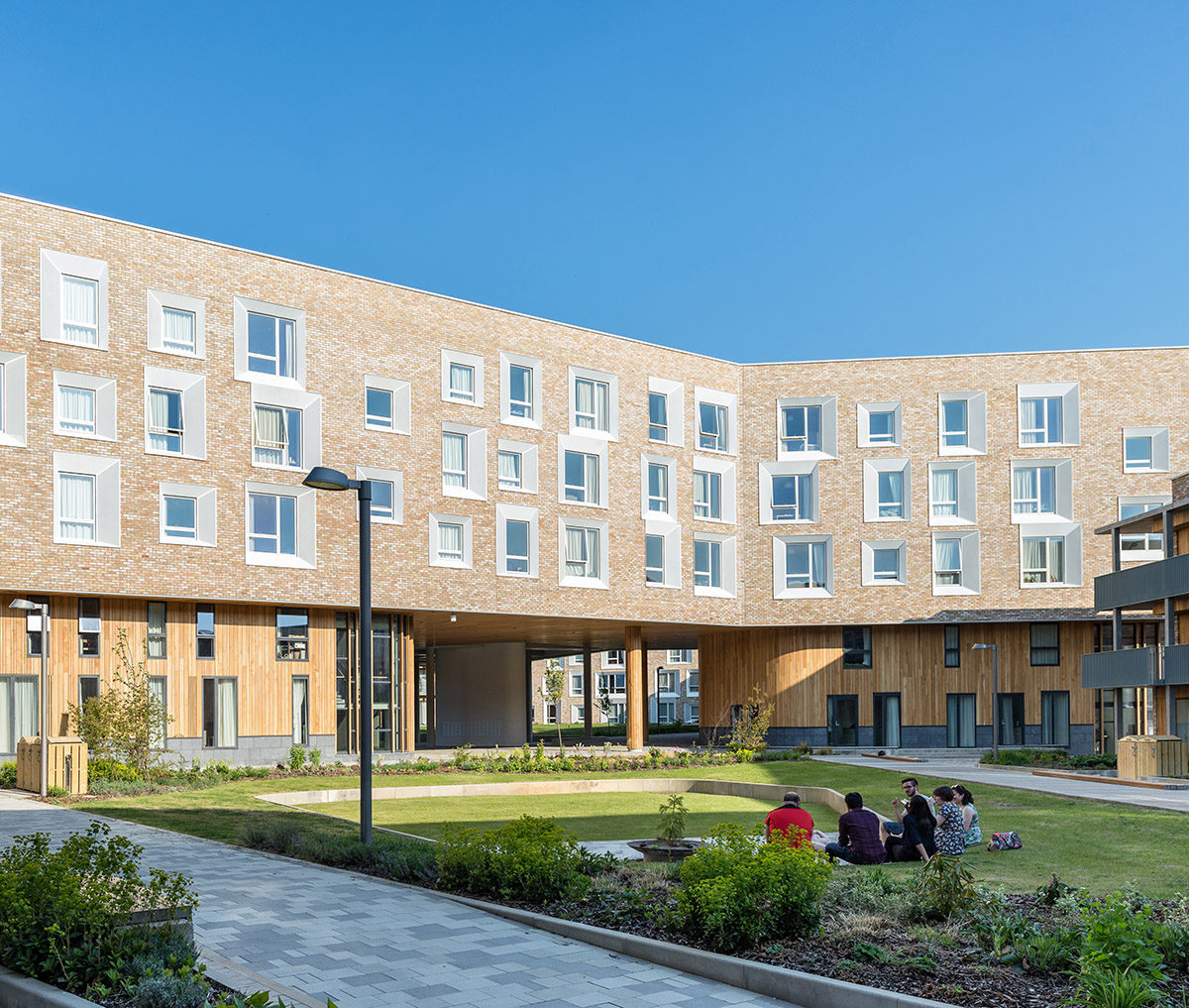
Image © Greg Holmes
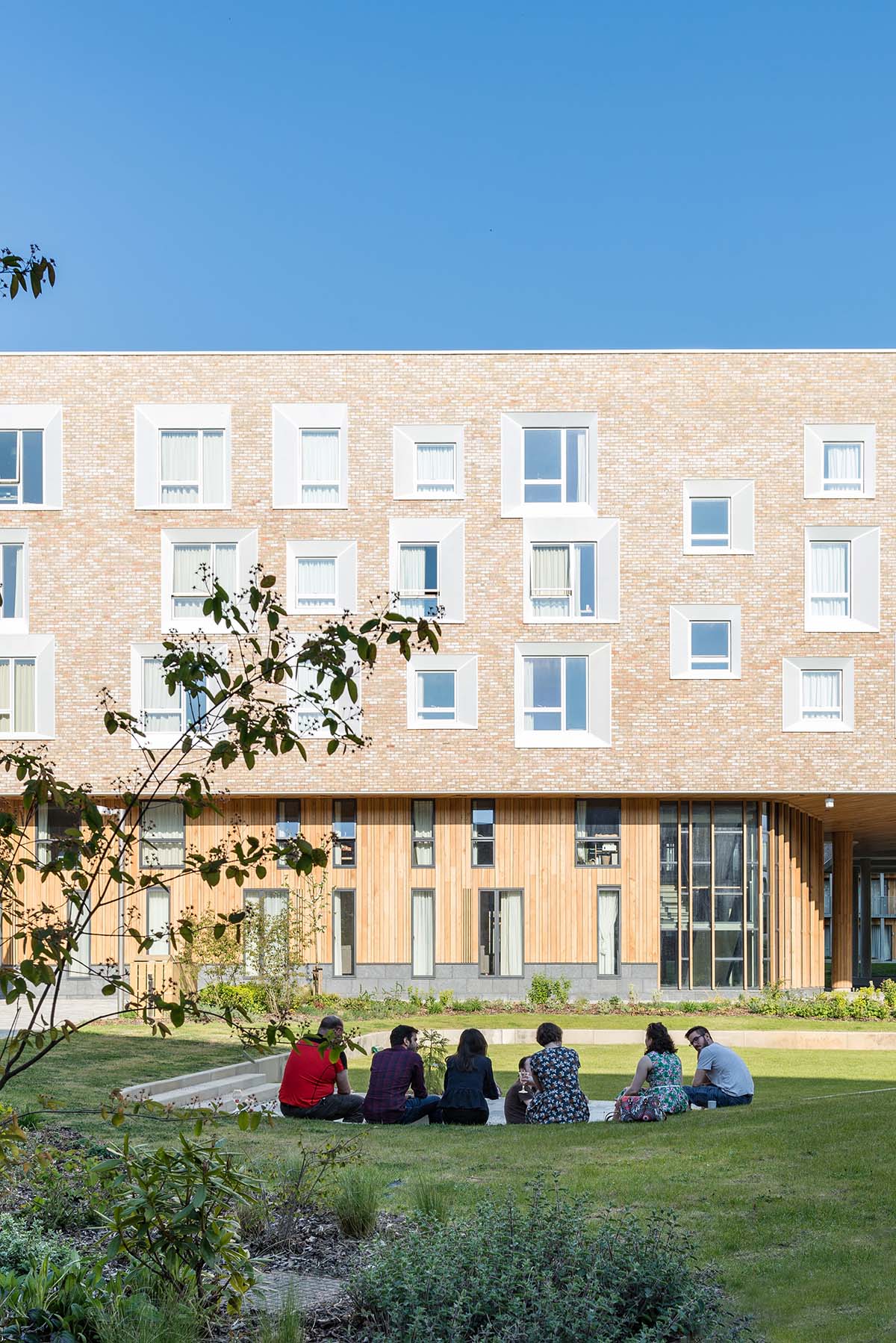
Image © Greg Holmes
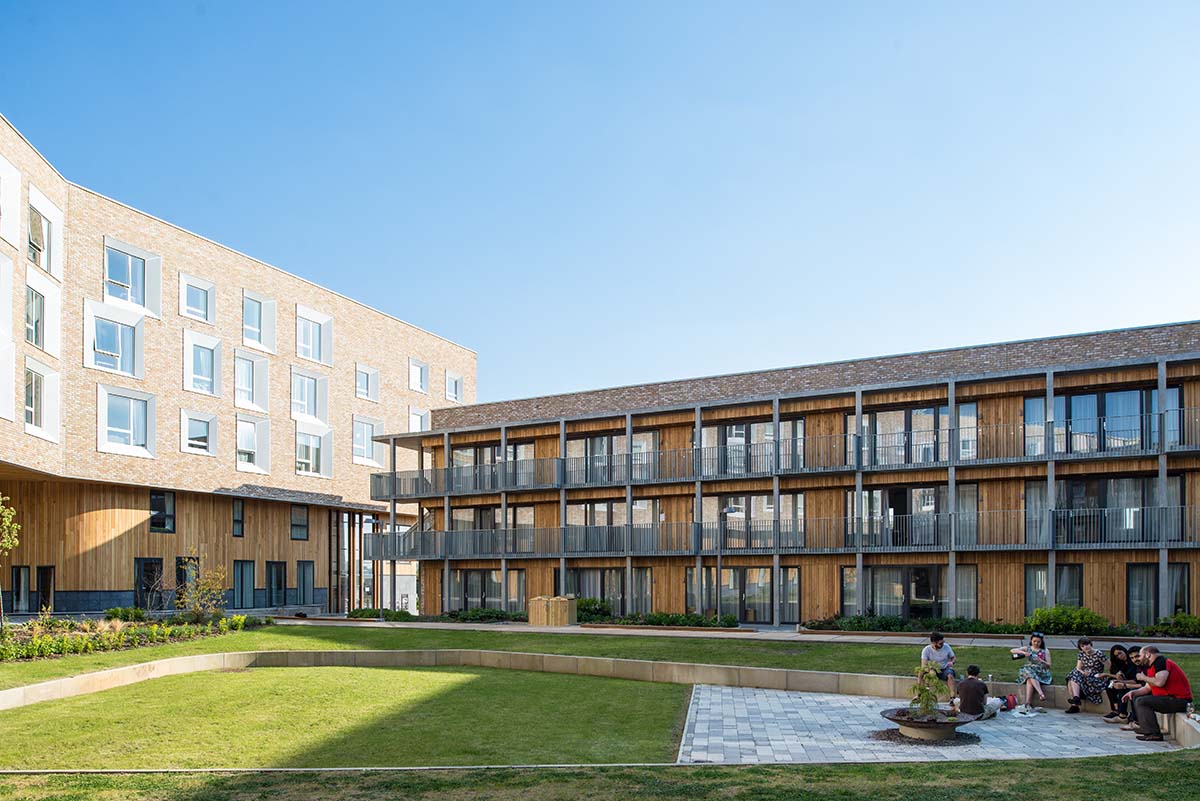
Image © Greg Holmes
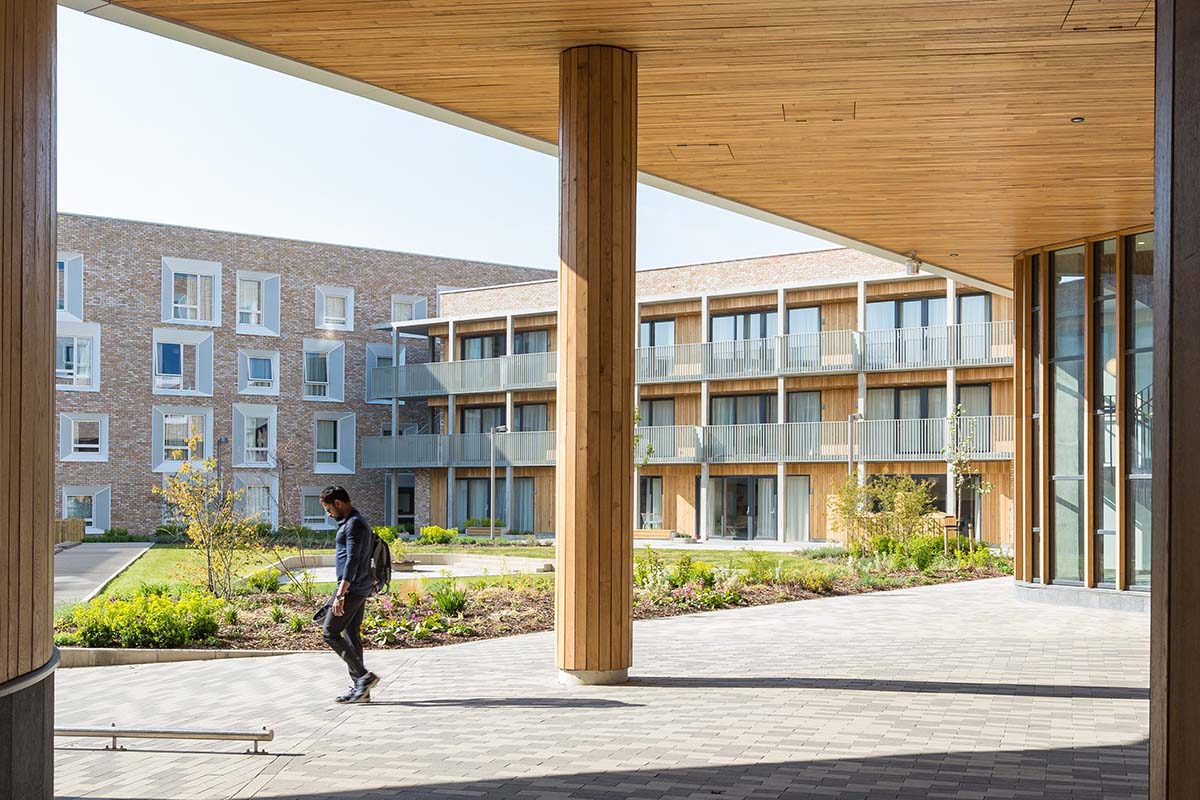
Image © Greg Holmes
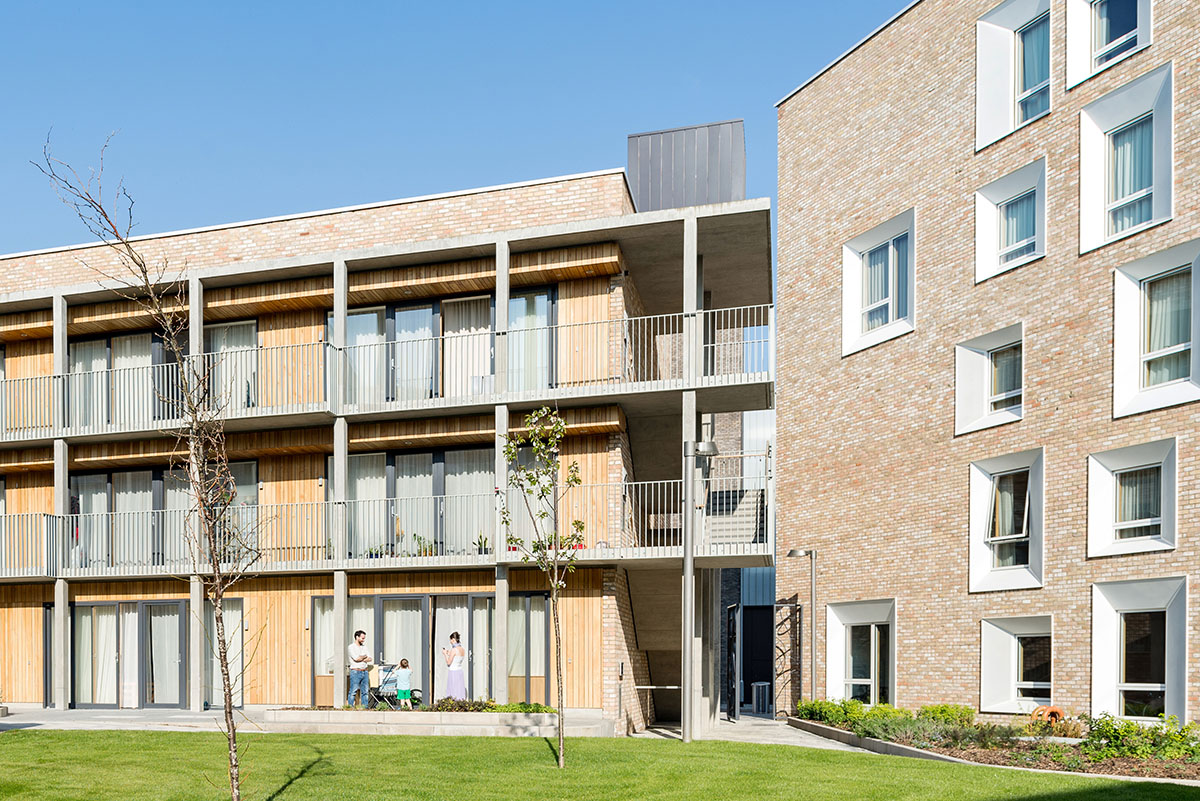
Image © Greg Holmes
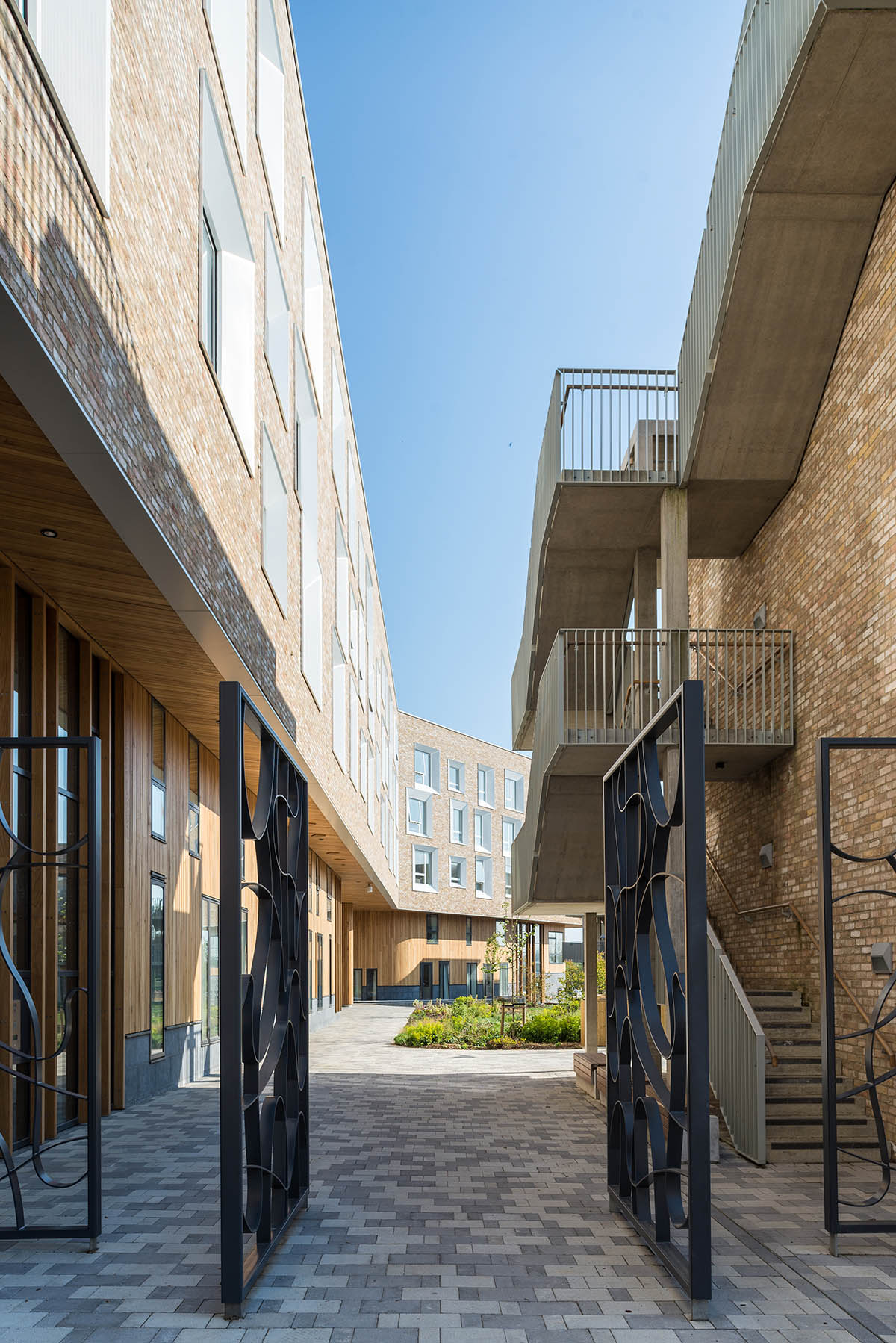
Image © Greg Holmes
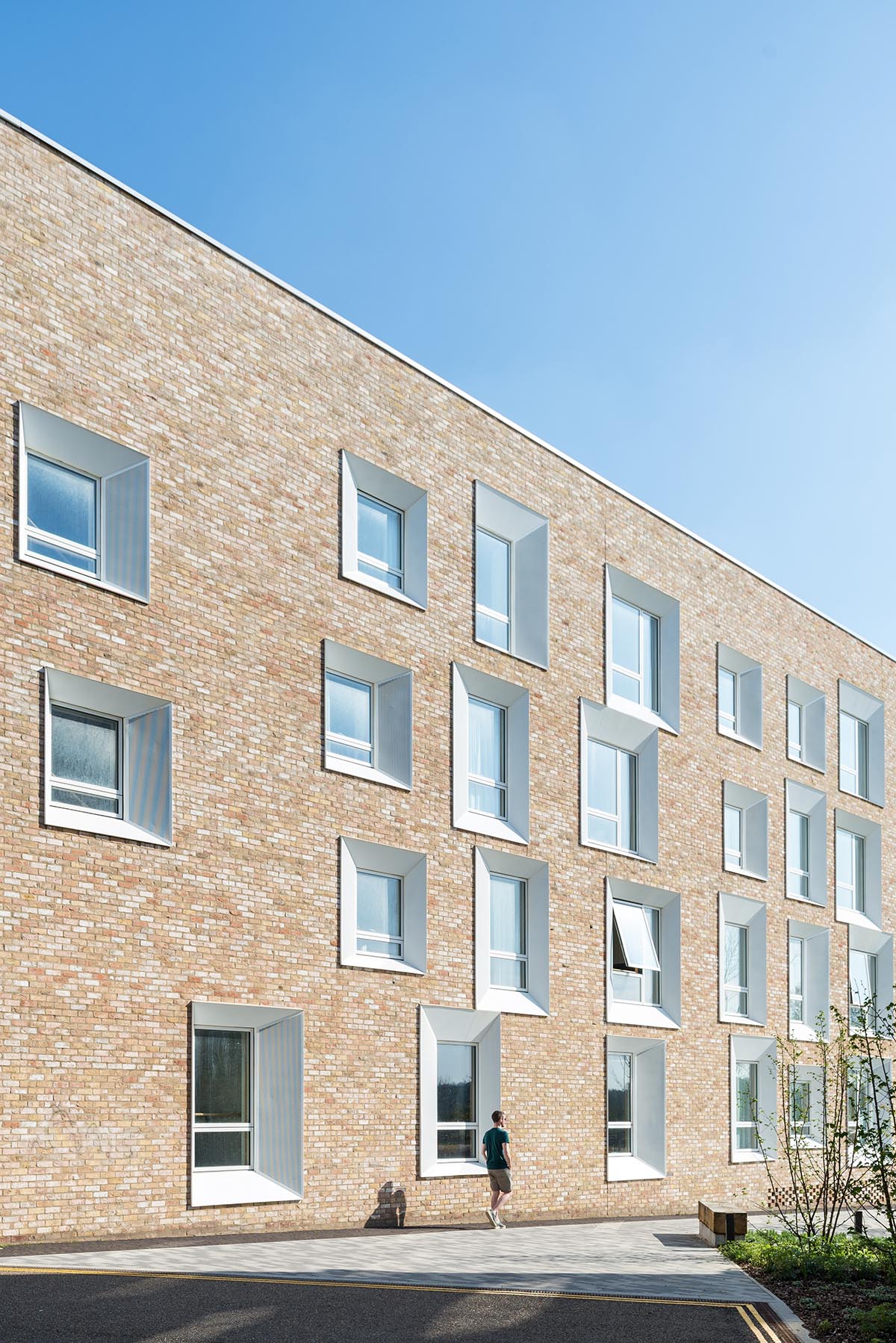
Image © Greg Holmes
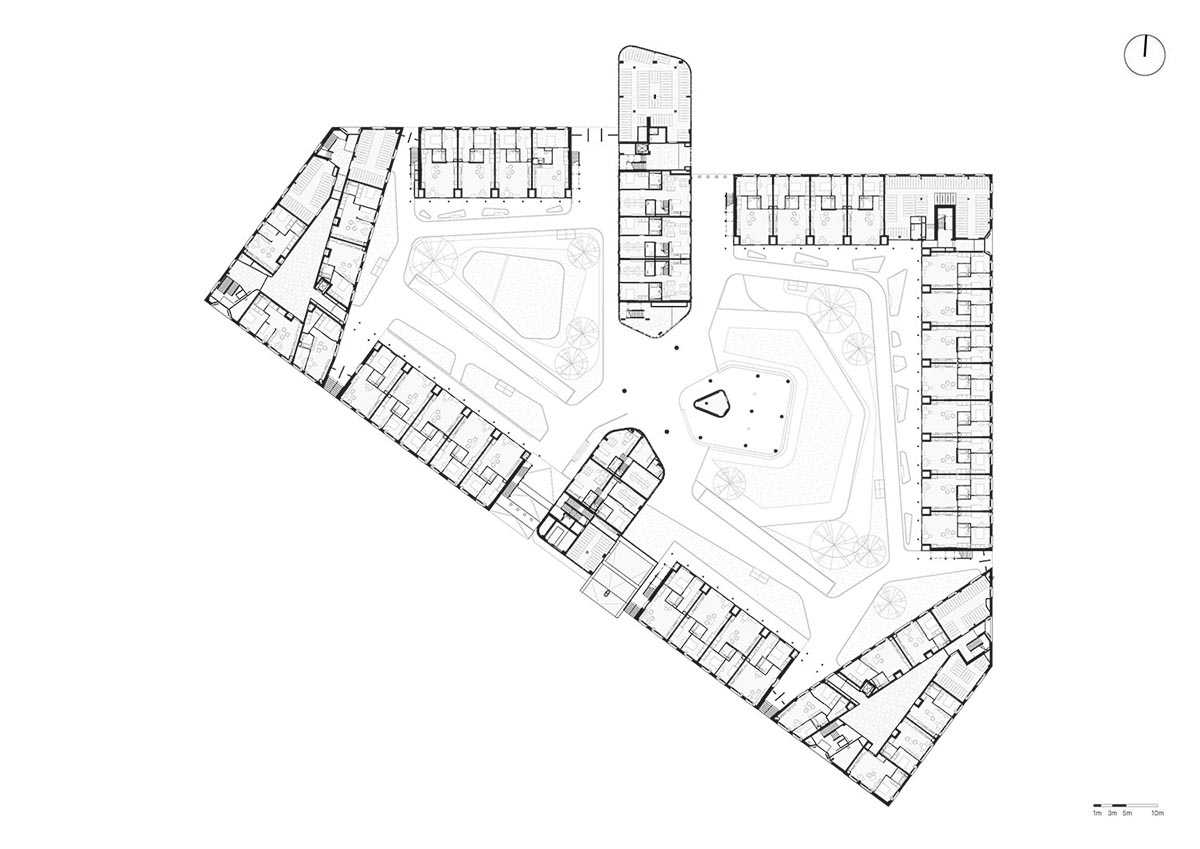
Ground floor plan
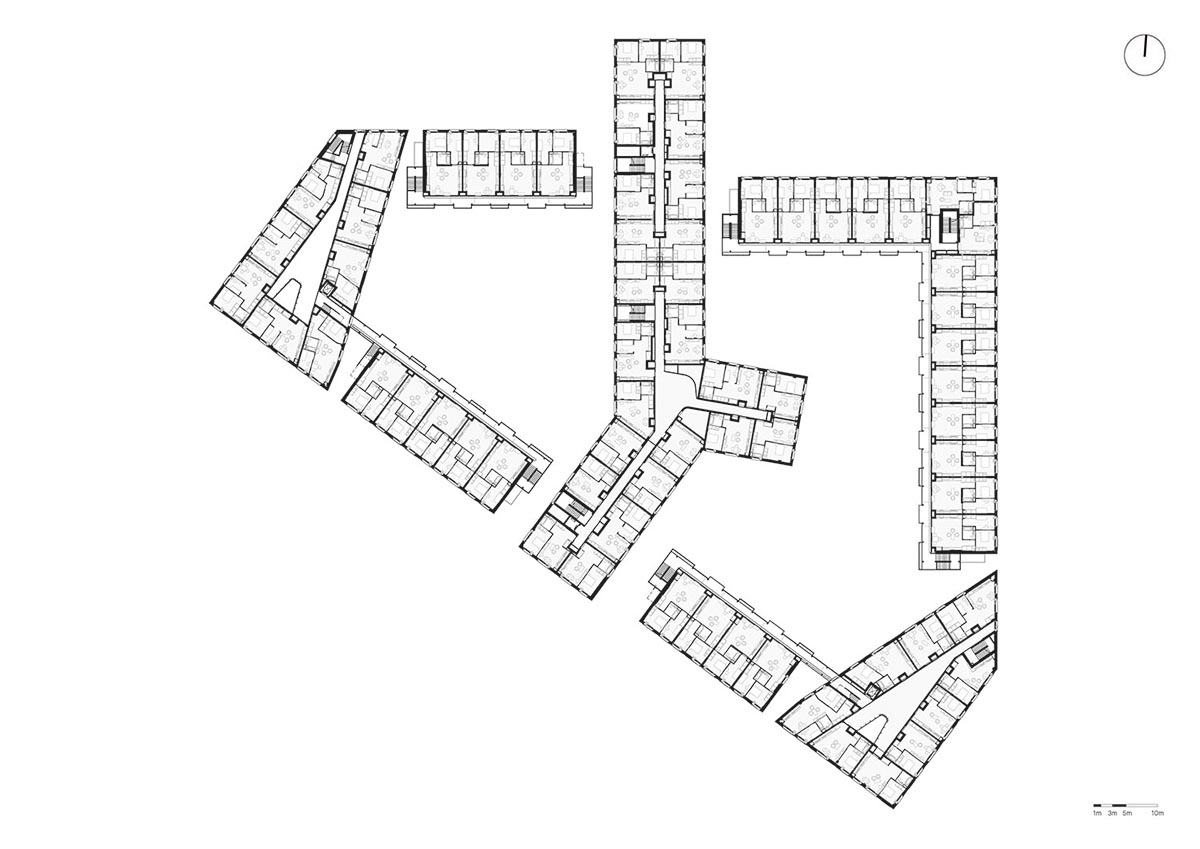
Second floor plan
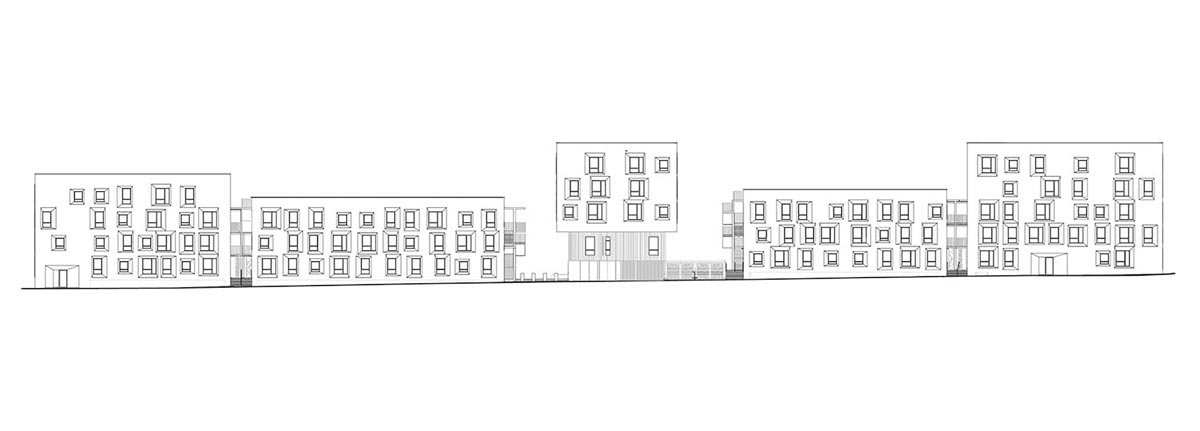
Elevation
Project facts
Programme: 232 dwellings for researchers and key university employees (19,500 m2), parking (3,120 m2) and public realm (5,126 m2)
Design: 2012-2014
Realisation: 2014-2018
Client: North West Cambridge Development, University of Cambridge, UK
Project management: Aecom, London, UK
Structural, Mechanical and Electrical engineer: URS, London, UK
Acoustic, Building physics and Fire safety consultant: URS, London, UK
Cost consultant: Gardiner & Theobald, London, UK
All images © Mecanoo unless otherwise stated.
All drawings © Mecanoo
> via Mecanoo
